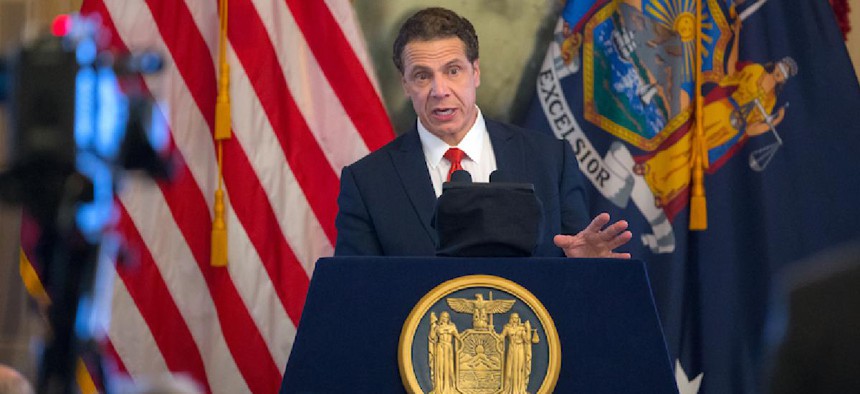Opinion
Age-friendly New York? Not with Cuomo’s budget cuts

Just days after Gov. Andrew Cuomo made the declaration in his State of the State tour that New York would become the first age-friendly state in the nation, he presented a budget that blatantly ignores the needs of older New Yorkers.
Despite affirming his commitment to seniors, Cuomo’s $17 million in proposed budget cuts to Title XX funds would force the closure of 65 New York City senior centers. He proposed similarly devastating cuts in 2011 and was met with swift opposition from older adults, caregivers, advocates and local elected officials. Once again, we find ourselves bracing for these dangerous changes.
The closing of 65 senior centers would deprive 6,000 older adults a day of a local senior center – which bring seniors out of social isolation by providing a peer community. The senior center cuts would also equal the disappearance of 1.5 million meals and 24,000 hours of case assistance which help seniors with public benefits, housing concerns and other aid in their own language. Elderly immigrants will also lose a safe haven, where they can trust staff.
In an astounding outpouring of opposition within two weeks, LiveOn NY and its members sent over 17,000 letters (in English, Spanish and Chinese) from 135 senior centers – more than half all senior centers in New York City – to Gov. Cuomo urging him to change the language that calls for the cuts within the 30-day amendment period. He failed to respond and the cut remains. The budget shifts the $17 million from funding senior centers to child care. In a show of solidarity, child care and aging advocates sent a letter stating opposition to pitting the generations and services against each other.
In addition to the Title XX cuts, Cuomo eliminated $11.5 million from the state Office for the Aging’s budget. Currently, there are over 15,000 older adults throughout the state languishing on waiting lists for vital services such as home-delivered meals, assistance with bathing and dressing, transportation to the doctor and needed home care. The cuts also eliminate NY Connects funding, a one-stop call-in program to connect seniors, people with disabilities and their caregivers to services, and reduce elder abuse services.
The governor’s announcement for the Age-Friendly initiative came as part of his Health Across All Policies program. And as research increasingly shows, senior centers and community aging services are essential parts of public health. A study released recently by the New York City Department for the Aging found that 7 in 10 seniors attend their local senior center to avoid social isolation. Over 20 percent found that visiting a senior center improved mental health. One out of four reported their physical health improved. These are important results and clearly indicate senior centers have incredible potential for helping people age into their 70s, 80s and 90s.
The state has laid out eight criteria for an “age-friendly” state and, in fact, senior centers meet each of those criteria: outdoor spaces and buildings, social participation, respect and social inclusion, work and civic engagement, community based social and health services, communication and information, transportation and housing (housing assistance is available at senior centers, and some senior centers are in senior buildings). These are the most cost-effective and user-friendly programs around, but are constantly starved for sufficient funding.
We know that as we age, we build an incredible amount of momentum that powers the economy, the political system and communities. Older New Yorkers provide invaluable volunteerism and caregiving, and contribute to the local economy. They are keepers of local histories and cultural traditions, and bastions of civic engagement. But there are challenges to this momentum. Incomes fall while the cost of living grows higher – one-third of older New Yorkers live at or near poverty. Half of all New York City seniors are immigrants and more than a third have limited English proficiency. Recent research reports that isolation can be a greater predictor of morbidity than obesity. Ageism is pervasive and obscures the diversity and growing number of older adults and their community contributions.
New York and the governor have a choice: harness the momentum of later life and create a truly age-friendly state, or contribute to the outflow of older people to other states and the reliance on institutionalization. It’s time to govern as though senior services are building the future of older New Yorkers, who are integral to the well-being of New York. In recognition of the value of senior centers to the health of older New Yorkers, we look forward to working with the governor to strengthen them through additional funding. It is time to rescind the budget cuts.
Bobbie Sackman is the associate executive director of public policy for LiveOn NY.